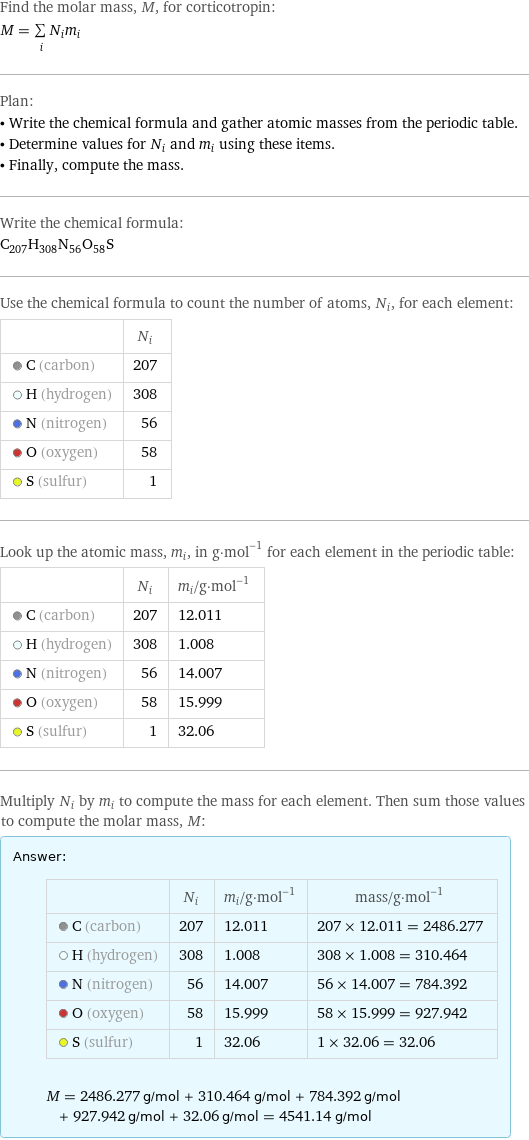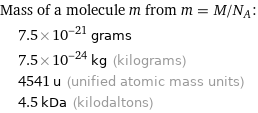Input interpretation

corticotropin | molar mass
Result

Find the molar mass, M, for corticotropin: M = sum _iN_im_i Plan: • Write the chemical formula and gather atomic masses from the periodic table. • Determine values for N_i and m_i using these items. • Finally, compute the mass. Write the chemical formula: C_207H_308N_56O_58S Use the chemical formula to count the number of atoms, N_i, for each element: | N_i C (carbon) | 207 H (hydrogen) | 308 N (nitrogen) | 56 O (oxygen) | 58 S (sulfur) | 1 Look up the atomic mass, m_i, in g·mol^(-1) for each element in the periodic table: | N_i | m_i/g·mol^(-1) C (carbon) | 207 | 12.011 H (hydrogen) | 308 | 1.008 N (nitrogen) | 56 | 14.007 O (oxygen) | 58 | 15.999 S (sulfur) | 1 | 32.06 Multiply N_i by m_i to compute the mass for each element. Then sum those values to compute the molar mass, M: Answer: | | | N_i | m_i/g·mol^(-1) | mass/g·mol^(-1) C (carbon) | 207 | 12.011 | 207 × 12.011 = 2486.277 H (hydrogen) | 308 | 1.008 | 308 × 1.008 = 310.464 N (nitrogen) | 56 | 14.007 | 56 × 14.007 = 784.392 O (oxygen) | 58 | 15.999 | 58 × 15.999 = 927.942 S (sulfur) | 1 | 32.06 | 1 × 32.06 = 32.06 M = 2486.277 g/mol + 310.464 g/mol + 784.392 g/mol + 927.942 g/mol + 32.06 g/mol = 4541.14 g/mol
Unit conversion

4.5411 kg/mol (kilograms per mole)
Comparisons

≈ 6.3 × molar mass of fullerene ( ≈ 721 g/mol )

≈ 23 × molar mass of caffeine ( ≈ 194 g/mol )

≈ 78 × molar mass of sodium chloride ( ≈ 58 g/mol )
Corresponding quantities

Mass of a molecule m from m = M/N_A: | 7.5×10^-21 grams | 7.5×10^-24 kg (kilograms) | 4541 u (unified atomic mass units) | 4.5 kDa (kilodaltons)

Relative molecular mass M_r from M_r = M_u/M: | 4541